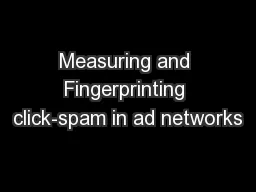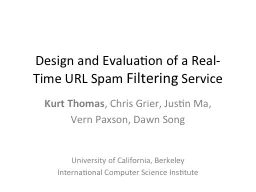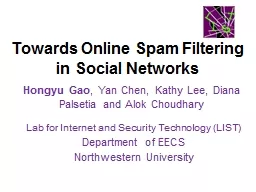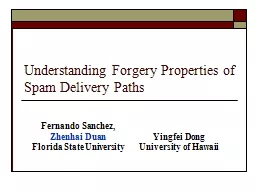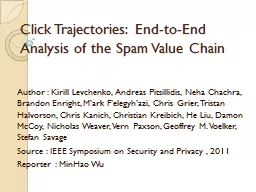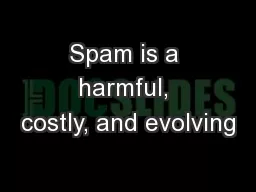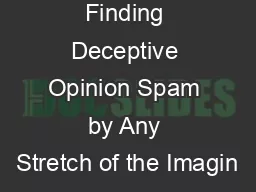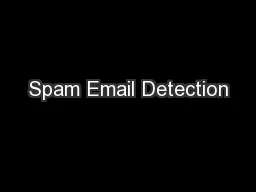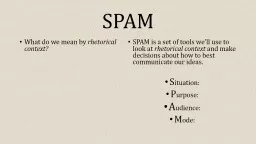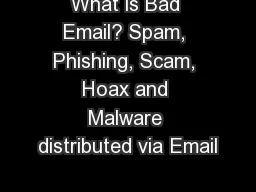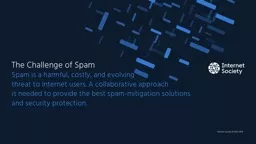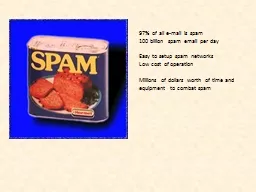PPT-Measuring and Fingerprinting click-spam in ad networks
Author : giovanna-bartolotta | Published Date : 2018-10-21
By Vacha Dave Saikat guha and yin zhang Presenter Uddipan chatterjee Key Ideas Advertisement plays an important role in the promotion and sale of all products
Presentation Embed Code
Download Presentation
Download Presentation The PPT/PDF document "Measuring and Fingerprinting click-spam ..." is the property of its rightful owner. Permission is granted to download and print the materials on this website for personal, non-commercial use only, and to display it on your personal computer provided you do not modify the materials and that you retain all copyright notices contained in the materials. By downloading content from our website, you accept the terms of this agreement.
Measuring and Fingerprinting click-spam in ad networks: Transcript
Download Rules Of Document
"Measuring and Fingerprinting click-spam in ad networks"The content belongs to its owner. You may download and print it for personal use, without modification, and keep all copyright notices. By downloading, you agree to these terms.
Related Documents

